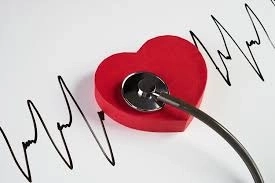
Coronary Artery Blockage From Diagnosis toTherapeutic Catheterization
Published on: 2025-06-18 | Written by: Dr. Hani Samir Asaad, Critical Cardiology
Coronary artery blockage is one of the most dangerous heart conditions that can lead to sudden heart attacks if not diagnosed and treated early. Dr. Hani Samir Asaad, Professor of Cardiology and Cardiac Rhythm Disorders, explains the key steps of diagnosis and the latest catheter-based treatment techniques that can save patients' lives.
What Is Coronary Artery Blockage?
It is a narrowing or blockage in the arteries that supply the heart muscle, usually caused by fat and cholesterol deposits that restrict blood flow. Dr. Hani Samir Asaad emphasizes that the blockage can be partial or complete and often develops silently until symptoms appear suddenly.
Symptoms of Coronary Artery Blockage
According to Dr. Hani Samir Asaad, symptoms may include:
-
Chest pain or pressure (angina).
-
Shortness of breath, especially during physical activity.
-
Unexplained fatigue.
-
Heart palpitations or excessive sweating.
Accurate Diagnostic Steps
The diagnostic plan includes several tests, such as:
-
Electrocardiogram (ECG).
-
Cardiac enzyme blood tests.
-
Coronary CT angiography.
-
Diagnostic catheterization to precisely locate the blockage.
Dr. Hani Samir Asaad notes that early diagnosis significantly increases treatment success and reduces the risk of complications.
Therapeutic Catheterization: An Effective Solution
For moderate to complete blockages, therapeutic catheterization is used. This minimally invasive procedure involves inserting a thin tube through a blood vessel to open the blocked artery and place a stent.
Dr. Hani Samir Asaad explains that the procedure is done under local anesthesia and is one of the safest and most effective ways to restore blood flow to the heart.
Prevention and Ongoing Follow-Up
Dr. Hani Samir Asaad stresses that prevention begins with managing risk factors, such as:
-
Quitting smoking.
-
Controlling blood pressure and cholesterol.
-
Maintaining a healthy diet.
-
Exercising regularly.
He also advises patients to attend regular follow-up appointments after catheterization to ensure stent effectiveness and prevent re-blockage.

